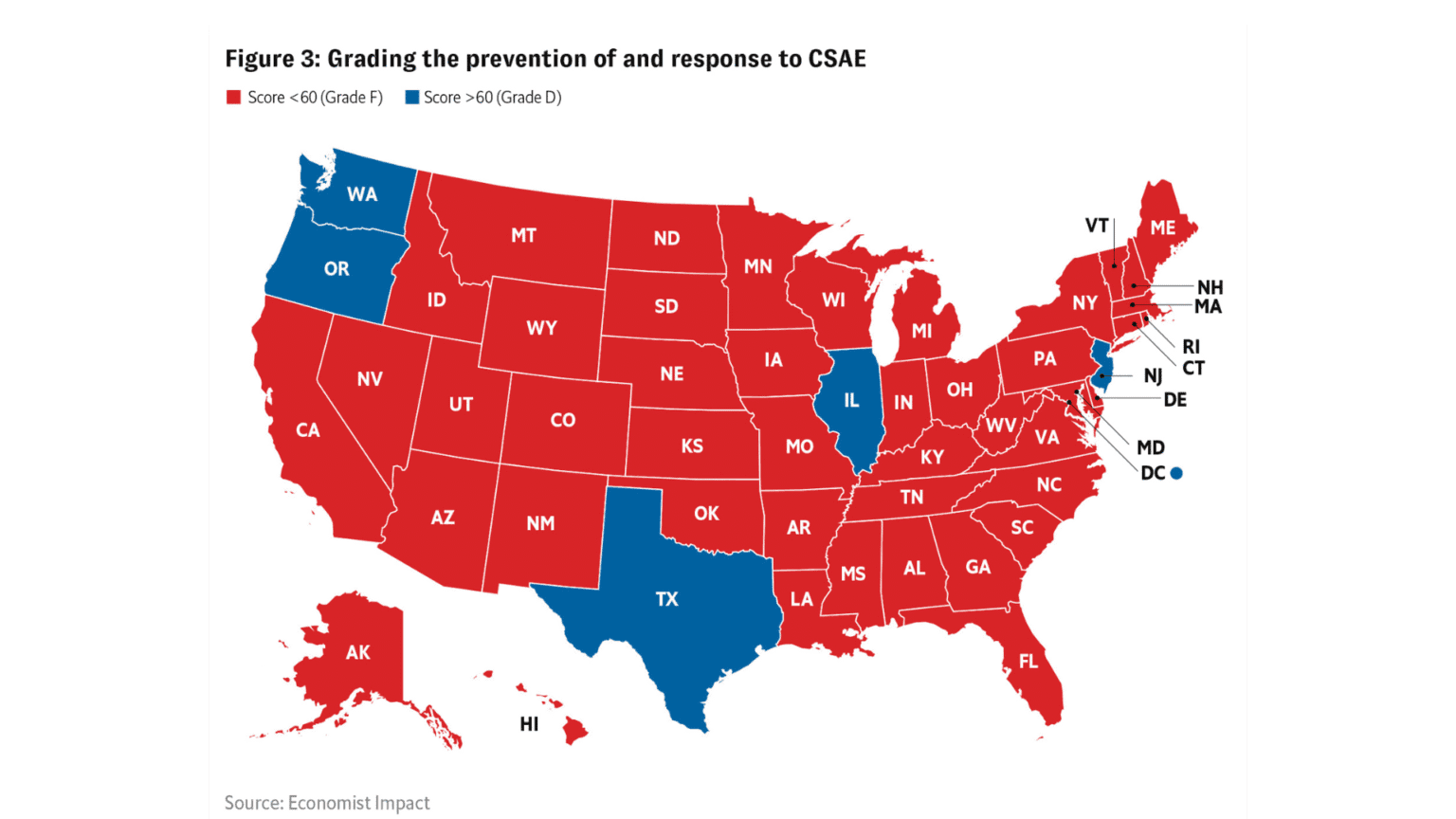World Childhood Foundation USA is proud to announce the release of the The U.S. Out of the Shadows Index that examines the actions—and inactions—taken by individual states to address child sexual abuse and exploitation. This report scores all 50 states plus the District of Columbia
Child sexual abuse and exploitation (CSAE) is a devastating issue affecting millions of children across the United States (US). While estimates vary, the Centers for Disease Control and Prevention (CDC) reports that at least one-in-four girls and one-in-20 boys in the U.S. will experience sexual abuse during childhood.
Yet, CSAE prevention and response efforts remain inconsistent across states. Many of the systems responsible for keeping children safe—including education systems, child protection, criminal justice and healthcare services—are primarily the responsibility of individual states. As a result, policy and practice often vary widely, while also making it complex to identify gaps and track progress.
To help shine a light on this critical issue, the US Out of the Shadows Index explores the steps individual states are taking to tackle CSAE. The index provides a roadmap for action, helping policymakers, advocates and communities identify what is working, where progress is stalled and what must be done to bring CSAE out of the shadows.
Key findings reveal:
- Despite growing awareness of CSAE, state-level prevention and response remains insufficient and fragmented. Across the 50 states and the District of Columbia (DC) the average score in the index is just 49.9 out of 100. If these scores were equated to academic grades, just five states—Washington, Illinois, Texas, New Jersey, Oregon—and D.C. would achieve above an F grade (Figure 1).
- Prevention capacity building is dragging down states’ index scores. Notable gaps include the absence of statewide action plans, limited professional training requirements and a lack of institutional policies that set clear standards for preventing and responding to sexual misconduct.
- While many states have policies and programs that are critical to preventing CSAE, a lack of requirements that such measures be implemented leave gaps. Although a majority of states (38) and DC having laws addressing school-based child sexual abuse prevention education, just over half mandate that students receive this instruction. The remainder encourage or permit such education, without explicitly requiring it.
- Systems often fail to account for the impacts of trauma and the barriers survivors encounter when seeking justice and support. For example, statutes of limitations (SOLs)—the legally defined timeframes within which criminal charges or civil claims must be filed—remain an obstacle in many states. Such restrictions often conflict with the lived reality of survivors, who may need decades to come forward, making short SOLs and time-barred support unfair.
- Children’s Advocacy Centers (CACs) play a key role in the response to CSAE, yet funding challenges continue to hinder operations. CACs bring together a multidisciplinary team of professionals—including police, child protection services, medical professionals and more—to work collaboratively under one roof and ensure the child’s well-being remains a central priority. Yet many CACs report persistent funding challenges, exacerbated by federal cuts, limiting their capacity to meet service standards and growing demand.
- Many states are taking action to address children’s safety online, including protection from online sexual harms. Already in 2025, more than 45 state legislatures have introduced a range of measures related to children’s online safety and social media use. Yet many of these bills have also drawn criticism, with concerns voiced over enforceability and potential restrictions of free speech and other rights. What is clear, however, is that child online safety must be part of a broader, evidence-informed strategy—one that includes digital literacy education in schools, training and tools for investigators, and stronger accountability mechanisms, including for the platforms where abuse often occurs.
The overarching conclusion is stark: the US needs to do more to protect its children from CSAE. There is a critical need for political commitment and leadership, increased coordination and accountability and sustained investment to address this pressing crisis.
Access the 2025 U.S. Out of the Shadows Index Report or read more on the Childhood USA website




